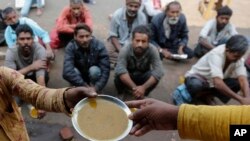The United States assumed the Presidency of the United Nations Security Council for the month of August, and immediately focused on addressing global food insecurity.
“There are now about 260 million people around the world who are acutely food insecure,” said Secretary of State Antony Blinken.
“Food insecurity itself drives conflict; it drives forced migration. It stunts growth, both physical growth and economic growth. It holds countries back. It holds people back,” he said. “The flip side of the coin is we’re also increasingly seeing food being used as a weapon of war, for leverage, for political purposes in conflict after conflict … We’ve just had 91 countries commit in a joint communique to ending the use of food as a tool of war. That, in and of itself, is a powerful statement, and we urge others to join.”
This is most evident in Ukraine, where Russia, having torn up the Black Sea Grain Initiative that enabled Ukraine to export food, has been “intentionally targeting food silos in Ukraine – literally destroying food as well as the means to produce it.”
Russia’s actions have serious repercussions for the food insecure world-wide. “Over the last year and a half, the United States has provided an additional $14.5 billion in food assistance to countries around the world. We are the largest contributor by far to the World Food Program – 50 percent of its budget every single year,” said Secretary Blinken.
“But for all the emergency assistance that we’re providing, and others are providing, it’s not enough. The United Nations and particularly the World Food Program has determined that right now we need to address the food insecurity for well over 100 million people around the world,” he said.
“Finally,” said Secretary Blinken, “we also have to take a long-term perspective.”
“By 2050, it is estimated that the population of this planet could be as many as 10 billion people. Demand for food is likely to increase by 50 percent over what it is today, and yet yields – what’s actually being produced – are going down, not up,” he said.
“We have to – and we are – addressing this challenge,” said Secretary Blinken. Through programs like the Vision for Adapted Crops and Soil, a new U.S. initiative, we can grow more resilient, more nutritious food. “This is a powerful new way to really make a difference over the long term in making sure that we have strong agricultural capacity and production around the world.”














